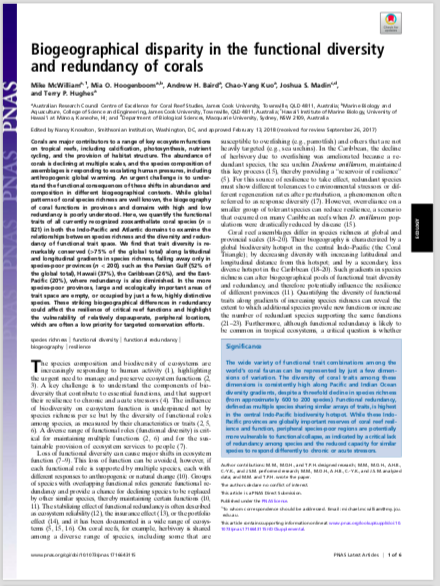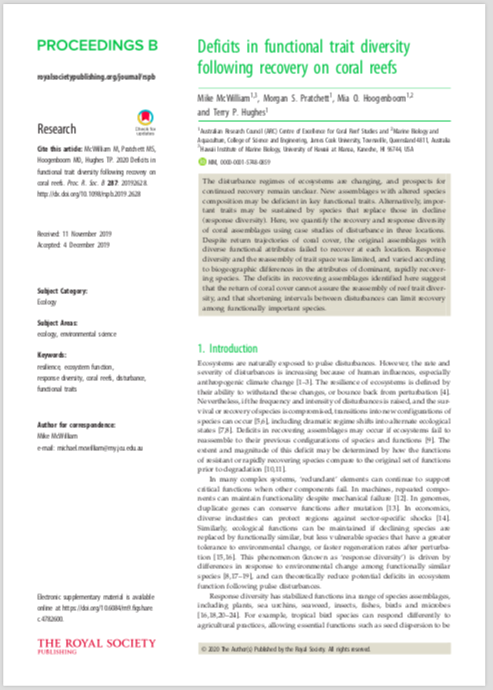My work uses traits such as physiological or demographic rates to understand how ecosystems work and how they're changing.
Recent projects:
resilience
Jan 2020
After an ecological disturbance like storms or coral bleaching, the species that bounce back are often a subset of those living there before. This study shows that while recovering reefs can look healthy and vibrant, key pieces of the puzzle are often missing, including important traits that help support the reef ecosystem. This is likely to get worse as disturbances like bleaching get more frequent with climate change.
productivity
Nov 2018

This study shows that coral diversity enhances primary production, a measure of energetic input into reef ecosystems. Using experimental chambers and 3D modelling, we show that a more diverse mix of species creates more beneficial interactions between neighbouring colonies. This effect was especially strong when water flow was high.
biogeography
Mar 2018
Millions of species live on coral reefs. Some are highly unique. Some are very similar to others. Similarity or “redundancy” is beneficial, because it provides fail-safe species that can support the ecosystem when others become depleted. Yet for corals, there are entire regions where just a few unique and irreplaceable species are doing all the work to support the ecosystem. We suggest that these regions are more vulnerable to collapse.
Links to papers:





